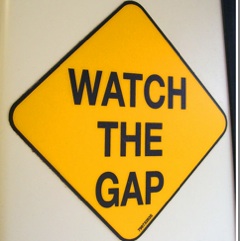 A new research report from Catalyst finds that men are more likely than women to be offered the highly visible, mission-critical roles, which provide the experience and exposure considered essential for advancement to the C-Suite.
A new research report from Catalyst finds that men are more likely than women to be offered the highly visible, mission-critical roles, which provide the experience and exposure considered essential for advancement to the C-Suite.
As I’ve written before, on-the-job experience is how high-potential executives prove themselves, broaden their competencies, make important contacts, and grow their careers. Though many companies focus on developing formal mentoring and education programs to promote the advancement of women, in truth high-potential women will only be able to rise into the senior executive ranks through exposure to critical business assignments.
The report states:
“Working on the right projects matters for advancement, and we found that men reported working on larger and more visible projects that they perceived to carry more risk to their companies.”
The Economic Consequences of the Opportunity Gap
Women’s opportunity gap has longterm economic consequences and is intrinsically linked to the gender pay gap. Baroness Prosser, deputy chair of the Equality and Human Rights Commission, said, “The opportunities gap leads to the lack of advance for women through the executive pipeline and this in turn provides for the gender pay gap.”
A survey by the Chartered Management Institute found that “the average female executive suffers a lifetime earnings gap of £423,390 [$673,444.13] when compared to a male worker with an identical career path.” And, given the opportunity gap, the fact that men’s careers tend to reach higher heights than those of equally qualified women, the earnings gap can grow even wider.
Who Gets Mission-Critical Roles?
Given the crucial role that high-profile assignments play in an executive’s career path, the Catalyst report asks: “Are organizations being vigilant to ensure that those critical experiences are allocated to men and women alike?”
The report recommends that companies:
- Formally identify mission-critical roles in their organization for the purposes of succession planning and talent development.
- Make metrics available to determine women’s representation in mission-critical roles.
- Acknowledge that not all VP roles are created equal.
- Make individuals accountable for ensuring women get equal access to mission-critical roles.
Combating Unconscious Gender Bias
In an interview with headhoncha, a blog for and about women in leadership, regarding the Catalyst study, Eleanor Tabi Haller-Jorden, SVP GLobal Learning Strategies, Catalyst Europe, said,
“Many companies are trying to do some deeper exploration themselves into what underlies this gap in opportunity for women. Some of it can be attributed to the fact that we continue to believe that men are leaders by default. Women are viewed as a-typical leaders, somehow going against the norms of leadership. A kind of damned if you do, doomed if you don’t, situation.”
Though many of the pernicious forms of gender discrimination are no longer evident in corporate America, there are unconscious beliefs about women that can put their
suitability for high-level jobs in doubt. Even today, women must fight the stereotype that they are less ambitious and more family oriented than men. Women are also seen as more nurturing, less risk-taking, and lacking the competitive toughness needed for a leadership position.
These biases are held by both women and men. When I interviewed Gabriela Franco Parcella, she said that both men and women at her company made the assumption that she wouldn’t want to travel because she had two small children. She said:
“Clearly communicating that you can and want to take on more responsibility is a good place to start. People make assumptions about those they work with all the time. For example, they may assume that you do not want more responsibility because of your family life.”
Speak Up!
In order to combat unconscious gender biases that may be prohibiting women from getting mission-critical roles, women must speak up. High-potential women must take it upon themselves to identify the roles within their organization that would advance their careers and then they must ask to be considered.
Emerging executives and senior executive women must also be willing to point out instances of unconscious gender bias at work.
Catalyst’s Eleanor Tabi Haller-Jorden said:
“We quite often see a benevolent bias. If we assume we know what makes women tick but we never bother to have those helpful conversations that can enlighten us, we make decisions that we think are wise decisions because they are informed by these inherent biases. There is a myth that the gender gap can be explained by women’s choices but we just don’t see that in our research. The ‘blame the women’ assumptions influence programmes to advance women. We continue to believe that physically apparent differences are proxies for assessments in leadership, ambition, aspiration and so on.”
Fostering a culture founded upon honest dialogue, accountability, and transparent decision-making, while also encouraging high-potential women to ask for mission-critical roles, will go a long way to narrowing the opportunity gap that exists for women.




